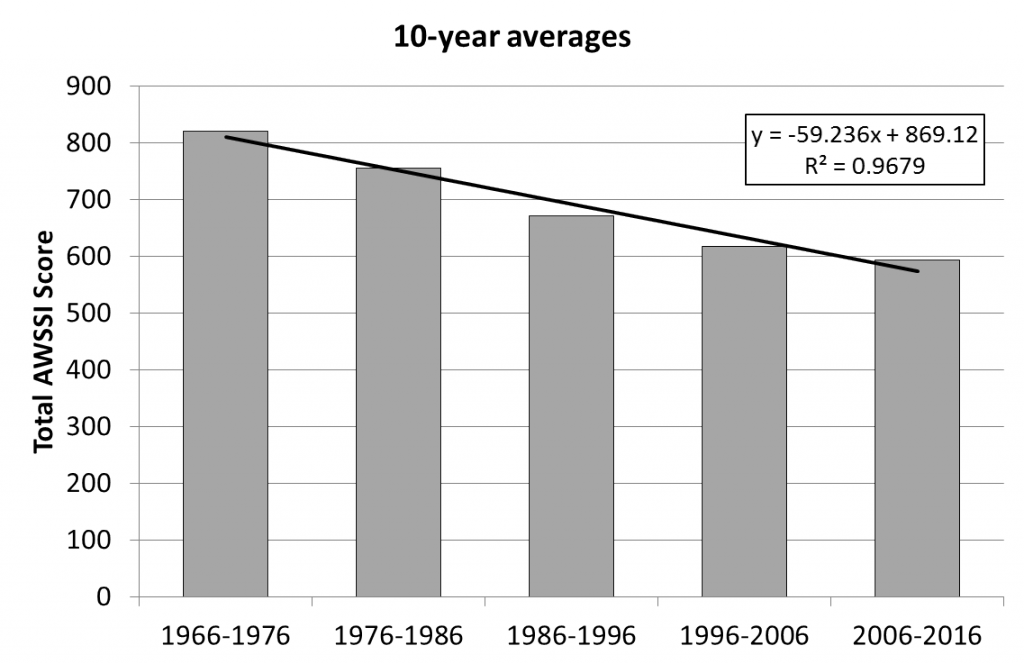Cassandre Stirpe ’15 (Collins Fellow)
Winter severity affects several factors of society, including education (school cancellations) and transportation (icy roads and runways). How severe is each winter, and how does any given year compare to previous winter seasons? Given early winter conditions, could it be possible to estimate severity later in the season? To help answer some of these questions, Boustead et al (2015) have developed the Accumulated Winter Season Severity Index (AWSSI) with the following goals in mind:
- to create an objective measure of winter conditions that uses commonly available data
- to allow comparisons of winter severity from season to season at a particular location
- to enable comparison of winter severity between different locations
The AWSSI score accumulates daily, based on temperatures and snowfall conditions. Colder temperatures and deeper snow accumulation lead to higher daily AWSSI scores, which accumulate to a final season total. Higher AWSSI scores indicate more severe winters. Scores for a location can be used to establish categorical ranges of conditions, from “mild” to “extreme”–which can be used to compare between multiple sites as well as between seasons.
Using local climate data (temperature, precipitation), AWSSI scores for Poughkeepsie, NY were calculated for fifty years, from the 1966-67 winter season to the 2015-16 winter season. The following analysis is the result of these AWSSI score calculations:
One of the first things that becomes apparent is the great amount of variability that occurs from year to year, especially in the amount of snowfall. It was possible for consecutive years to show similar AWSSI scores (as in the mid-1980s), or to vary greatly from one season to the next. For example, the 2015-2016 season was the mildest of the 50 years analyzed, while the 2014-2015 season was the 7th most severe.
Looking at individual yearly AWSSI scores, even across a 50-year time span, provides little information about long-term trends. However, when 10-year averages of yearly AWSSI scores are calculated and graphed, a pattern more clearly emerges. Over the past 50 years, winter severity has generally been decreasing, at a rate of 60 AWSSI points per decade. The result is that the 2006-2016 winter average was 28% less severe than the 1966-1976 winter average. Further analysis shows that temperature scores have decreased by about 20 points per decade, while snowfall scores have decreased by about 40 points per decade.
While there is considerable year-to-year variability in AWSSI scores, the long-term trend is one of decreasing winter severity, due to both milder temperatures and decreased snowfall. Of the two variables, snowfall was more variable through time, and also contributed more to the long-term decline in AWSSI scores.
The 2015-2016 winter season was especially mild, with very little snowfall and warmer temperatures, leading to a total score of only 237 by March 31. At the present rate of winter severity decline, the 10-year average would be 237 points approximately 5.7 decades from now, at about the year 2070. If present trends continue, mild winters such as the 2015-2016 season would become more common in coming decades.
For more information about AWSSI, visit this page.


